





Browse for Fan
Clubs alphabetically

FAN CLUB ASSOCIATION for all your favourite celebrities & stars - Fan Club | Fanzines | Fan Sites | Official Fan Clubs | Unofficial Fan Clubs .... they're all here !!


Q. What's the score with FanClub.org.uk ?
A. It's quite simple really - we are a Fan Club for Fan Clubs, and our website has information about stuff and things, objects and people, celebrities and stars, with info, pictures and videos of your favourite shows, films, bands, artists etc. Sometimes, if it's a singer or group we appreciate then there might be a discography or list of their greatest hits. A movie star or tv actor may have info on their film appearances, plus there may be a complete section about one film in particular if it warrants a fan club page of it's own. There's no boundaries what might be included on the fan club website and it get's updated regularly so check back often to see any new fan club pages we add as we trawl the web looking for inspiration. Remember, you can add a link to your own fanclub ….
Click here for more info on featuring your own fan club






Designed & Maintained by PANTHER DESIGN
















Fan Club Society
The Fan Club Society is a portal to information about your favourite things, whether it's celebrities, music, television, entertainment, movies or sport. It's a network of official and unofficial fanclub websites, online fanzines, fan pages and fan sites about anything and everything that has a following. A fan page on our site could include pictures, videos, news, links to online forums, and more. A fan page could be about something or someone. A fanclub page for a person will usually have some background info on them, their age, when and where they were born, any awards they may have won, possibly a discography of their hit singles if they're a singer, musician or band, or a filmography and information on their screen appearances if they're an actor or actress. If it's a person we try to include a biography and if it's an item we do our best to get information on it's history and development. We're a fan club community and invite visitors to contribute photos and info to improve our pages, and if you run your own fanclub we’re happy to feature you on our site.


On May 3, 2012, The Elder Scrolls Online was revealed. It was released for Windows and OS X on April 4, 2014, with the Xbox One and PlayStation 4 versions to follow.
Prior to working on The Elder Scrolls series, Bethesda had worked predominantly with sports and action games. In the six years from its founding to Arena's 1994 release, Bethesda had released ten games, six of them sports games, with such titles as Hockey League Simulator, NCAA Basketball: Road To The Final Four ('91/'92 Edition), and Wayne Gretzky Hockey, and the remaining four adaptations from other media, primarily the Terminator series. Bethesda's course changed abruptly when it began its first action role-playing venture. Designer Ted Peterson recalls: "I remember talking to the guys at Sir-Tech who were doing Wizardry VII: Crusaders of the Dark Savant at the time, and them literally laughing at us for thinking we could do it." Ted Peterson worked alongside Vijay Lakshman as one of the initial designers of what was then simply Arena, a "medieval-style gladiator game.
The Elder Scrolls is a series of action role-playing open world fantasy video games primarily developed by Bethesda Game Studios and published by Bethesda Softworks. The series is known for their elaborate and richly detailed open worlds and its focus on free-form gameplay. Morrowind, Oblivion and Skyrim all won Game of the Year awards from multiple outlets.
Skyrim
In August 2010, Todd Howard revealed Bethesda were currently working on a game that had been in development since the release of Oblivion, and that progress was very far along. While the game was conceptualized after Oblivion's release, main development was restricted until after Fallout 3 was released. In November, a journalist from Eurogamer Denmark reported overhearing a developer on a plane talking about the project; a new The Elder Scrolls game, although Bethesda did not comment on the report. At the Spike Video Game Awards in December, Todd Howard appeared on stage to unveil a teaser trailer and announce the title of the game. The Elder Scrolls V: Skyrim was released on November 11, 2011.
Arena
Peterson and Lakshman were joined by Julian Lefay who, according to Peterson, "really spear-headed the initial development of the series." Peterson, Lakshman and LeFay were longtime aficionados of pencil and paper role-playing games, which greatly influenced the creation of the world of Tamriel. They were also fans of Looking Glass Studios' Ultima Underworld series, their main inspiration for Arena. Initially, Arena was not to be a role-playing game at all. The player, and a team of his fighters, would travel about a world fighting other teams in their arenas until the player became "grand champion" in the world's capital, the Imperial City. Along the way, side quests of a more role-playing nature could be completed. As the process of development progressed, however, the tournaments became less important and the side quests more. RPG elements were added to the game, as it expanded to include cities outside the arenas, and dungeons beyond the cities. Eventually it was decided to drop the idea of tournaments altogether, and focus on quests and dungeons, making the game a "full-blown RPG". Although the team had dropped all arena combat from the game, all the material had already been printed up with the title, so the game went to market as The Elder Scrolls: Arena. Bethesda Founder Christopher Weaver came up with the name of "The Elder Scrolls",and the words eventually came to mean "Tamriel's mystical tomes of knowledge that told of its past, present, and future."The game's initial voice-over was changed in response, beginning: "It has been foretold in the Elder Scrolls ..."
Bethesda missed their Christmas 1993 deadline. The game was released in the first quarter of 1994, "really serious for a small developer/publisher like Bethesda Softworks." The packaging included a scantily clad female warrior, which further contributed to distributor concern, leading to an initial distribution of only 20,000 units. Having missed the Christmas sales season, the development team was concerned that "We had screwed the company." Nevertheless, sales continued to grow, month after month, as news of the game was passed by word-of-mouth. Despite some initial bugginess,and the formidable demands the game made on players' machines,it became a cult hit.Evaluations of the game varied from "modest"to "wild."Still, the game maintained traction with its audience. Game historian Matt Barton concluded that, "the game set a new standard for this type of CRPG, and demonstrated just how much room was left for innovation.
Daggerfall
Work on The Elder Scrolls II: Daggerfall began immediately after Arena's release in March 1994. Ted Peterson was assigned the role of Lead Game Designer. Daggerfall's plot was less clichéd than Arena's and involved a "complex series of adventures leading to multiple resolutions."With Daggerfall, Arena's experience-point-based system was replaced with one rewarding the player for actually role-playing their character. Daggerfall came equipped with an improved character generation engine, one that included a GURPS-influenced class creation system, offering players the chance to create their own classes, and assign their own skills. Daggerfall was developed with an XnGine engine, one of the first truly 3D engines. Daggerfall realized a gameworld twice the size of Great Britain, filled with 15,000 towns and a population of 750,000.It was influenced by analog games and literature Julian LeFay or Ted Peterson happened to be playing or reading at the time, such as Dumas's The Man in the Iron Mask and Vampire: The Masquerade.It was released on August 31, 1996.Like Arena, Daggerfall's initial release suffered from some bugs, leaving consumers disgruntled.These early anomalies were fixed in later versions. This experience led to a more prudent release schedule for future games.
Morrowind
The third title in The Elder Scrolls series was first conceived during the development of Daggerfall. Initially designed to encompass the whole province of Morrowind and allow the player to join all five Dunmer Great Houses it was decided that the scope of the game was too much for the technology available at the time. At publication it covered just the isle of Vvardenfell and allowed the player to only join three of the Great Houses. The XnGine was scrapped and replaced with Numerical Design Limited's Gamebryo, a Direct3D powered engine, with T&L capacity, 32-bit textures and skeletal animation. It was decided that the game world would be populated using the methods the team had developed in Redguard; with the game objects crafted by hand, rather than generated using the random algorithmic methods.
The project took "close to 100 man-years to create". Bethesda tripled their staff and spent the first year developing The Elder Scrolls Construction Set. This allowed the game staff to easily balance the game and to modify it in small increments rather than large. Ted Peterson, who had left following the release of Daggerfall, returned to work as an author of in-game material, and as a general consultant on the lore-based aspects of the work. The PC version of Morrowind had gone gold by April 23, 2002, and was released on May 1 in North America, with the Xbox release set at June7 On January 3, Bethesda announced that game publisher Ubisoft would take control of Morrowind's European distribution, in addition to those of eight other Bethesda games.
The Elder Scrolls III: Tribunal expansion pack went gold on November 1 and was released, with little fanfare, on November 6. Tribunal puts the player in the self-contained, walled city of Mournhold, which can be teleported to from Morrowind's land mass. Development on the game began immediately after Morrowind shipped, giving the developers a mere five-month development cycle to release the game. The prior existence of the Construction Set, however, meant that the team "already had the tools in place to add content and features very quickly". Interface improvements, and specifically an overhaul of Morrowind's journal system, were among the key goals. Morrowind 's second expansion, The Elder Scrolls III: Bloodmoon, went gold by May 23, and was released on June 6. It had been worked on since the release of Tribunal. In the expansion the player travels to the frozen island of Solstheim and is asked to investigate the uneasiness of the soldiers stationed there.
Oblivion
Work on The Elder Scrolls IV: Oblivion began in 2002, immediately after Morrowind's publication. Oblivion was developed by Bethesda Softworks, and the initial Xbox 360 and Personal computer (PC) releases were co-published by Bethesda and Take-Two Interactive subsidiary 2K Games. Oblivion was released in March 21, 2006. Developers working on Oblivion focused on providing a tighter storyline, more developed characters and to make information in the game world more accessible to players. Oblivion features improved AI, improved physics, and improved graphics. Bethesda developed and implemented procedural content creation tools in the creation of Oblivion's terrain, leading to landscapes that are more complex and realistic than those of past titles, but had less of a drain on Bethesda's staff.


The Elder Scrolls Fan Club - information, links, photos and videos about this publisher of classic games
Celebrity Fan Clubs | Fanzines | Fan Sites | Official Fan Club | Unofficial Fan Clubs - Celebrities, TV and Movie Stars

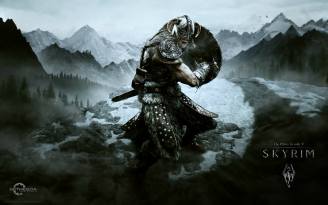
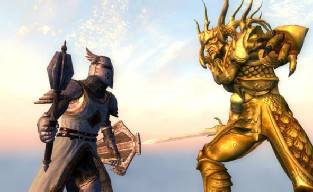
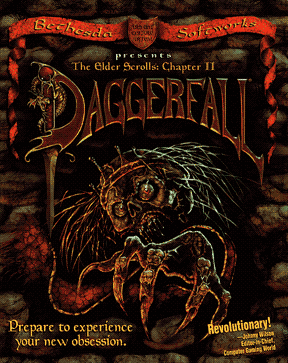
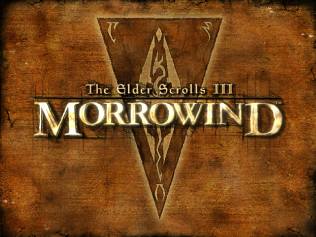
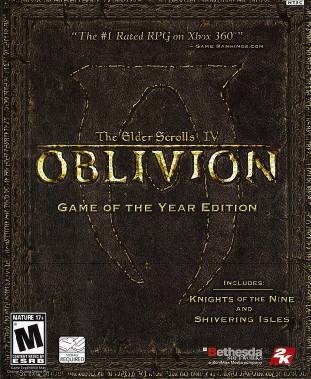
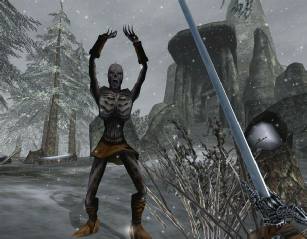
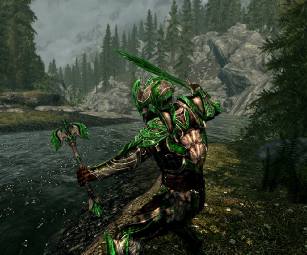
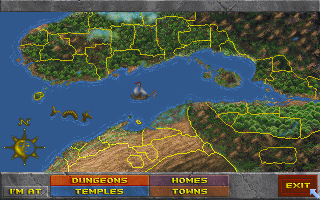
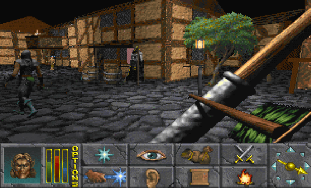

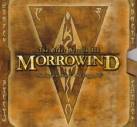
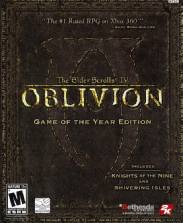
The Elder Scrolls Fan Club



















































